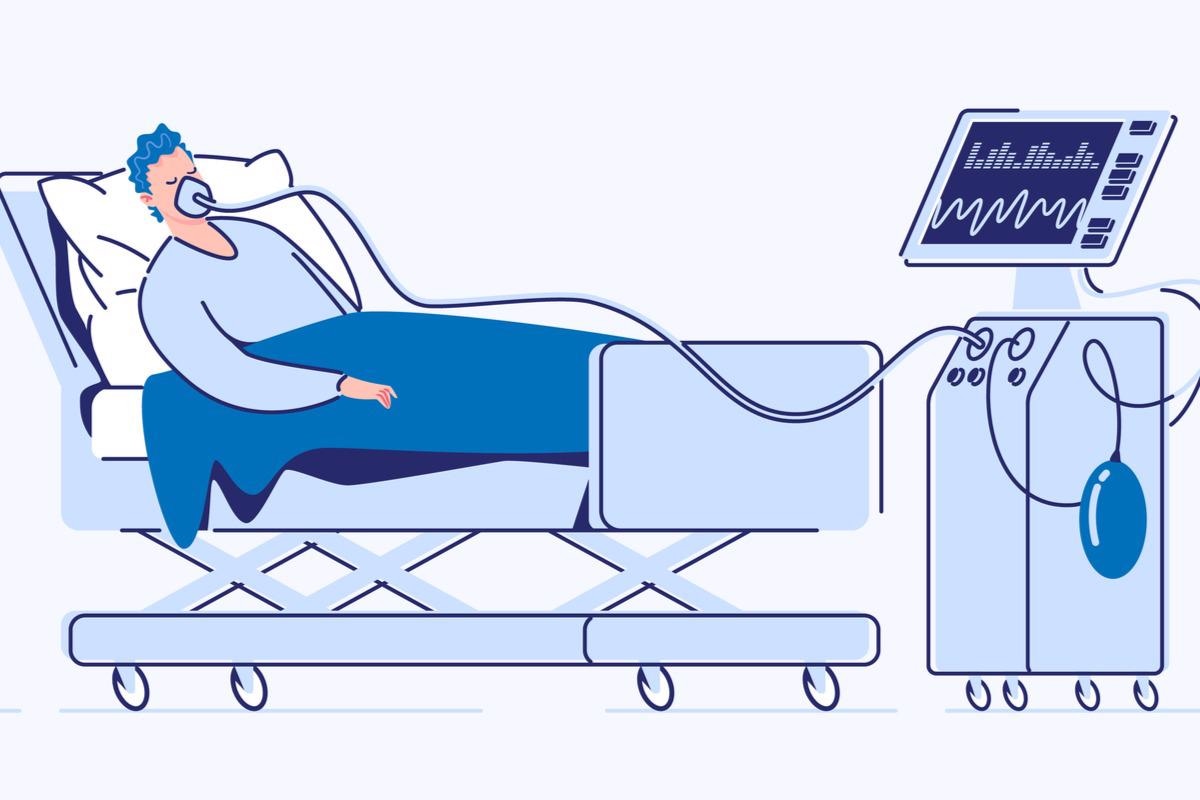In a recent study posted to Research Square*, researchers reported that plasma interleukin (IL)-6 levels in patients with acute respiratory distress syndrome (ARDS) due to coronavirus disease 2019 (COVID-19) could predict early withdrawal from mechanical ventilation (MV).
 Study: Interleukin-6 as a predictor of early weaning from invasive mechanical ventilation in COVID-19 patients with acute respiratory distress syndrome. Image Credit: charactervectorart/Shutterstock
Study: Interleukin-6 as a predictor of early weaning from invasive mechanical ventilation in COVID-19 patients with acute respiratory distress syndrome. Image Credit: charactervectorart/Shutterstock

 *Important notice: Research Square publishes preliminary scientific reports that are not peer-reviewed and, therefore, should not be regarded as conclusive, guide clinical practice/health-related behavior, or treated as established information.
*Important notice: Research Square publishes preliminary scientific reports that are not peer-reviewed and, therefore, should not be regarded as conclusive, guide clinical practice/health-related behavior, or treated as established information.
Background
ARDS is characterized by acute inflammatory lung injury and impaired oxygenation leading to MV in patients under intensive care. ARDS could be due to trauma, infection, pneumonia, transfusion history, sepsis, or even lung injury induced by the ventilator itself. The mortality rate during hospitalization is high (40% – 50%), which increases with ARDS severity. Several studies have evaluated the efficacy of corticosteroids in modulating hyper inflammation, but their effectiveness remains controversial. Nonetheless, administering dexamethasone could shorten MV duration and reduce the mortality of those with moderate or severe ARDS.
Moreover, critical COVID-19 patients who needed MV presented ARDS with high in-hospital mortality. The early use of remdesivir and dexamethasone was associated with a decrease in the MV duration and in-hospital mortality of severe acute respiratory syndrome coronavirus-2 (SARS-CoV-2) patients. Treating patients with ARDS is challenging, given that indicators of predicting therapeutic response such as MV withdrawal remain undefined.
The study and findings
Researchers investigated whether IL-6 levels could indicate early withdrawal of patients with ARDS from MV in the current study.
Between February 2020 and July 2021, about 268 COVID-19 patients were recruited, of which 149 were excluded due to lack of data or participation consent. Of the 119 patients on MV with SARS-CoV-2-induced ARDS, 81% were males, and the mean period from the onset of symptoms to intubation was seven days. Around 20% – 30% of them were comorbid with different conditions such as diabetes, hypertension, and chronic kidney disease.
Each patient underwent anticoagulation therapy, and 83% were given remdesivir. Fifty-two patients were treated with dexamethasone, which continued during MV. Overall, the duration of MV use was 13.9 days. Thirteen patients needed extracorporeal membrane oxygenation (ECMO) or died during hospitalization.
Clinical characteristics were assessed and compared in two cohorts: one in which patients were treated with the steroid and the other non-steroid group. Fewer elderly males were present in the steroid-treated group compared to the non-steroid patients. The duration of symptom onset to MV was shorter for steroid patients. Fewer steroid-treated patients had diabetes mellitus. No significant differences were observed in the platelet count, creatinine and bilirubin levels, or remdesivir use across the two cohorts. However, the combined rate of ECMO use of in-hospital mortality was significantly lower in dexamethasone-treated patients than in non-treated patients.
Plasma levels of C-reactive protein (CRP) and IL-6 were estimated in 40 steroid-treated patients and 16 non-steroid patients on days 1, 4, and 7 of MV use. Those treated with dexamethasone had significantly lower CRP and IL-6 than non-steroid patients. The authors observed that the circulating levels of IL-6 on the seventh day of MV use correlated most closely with the duration of MV, followed by the percent change of IL-6 or CRP levels between days 1 and 7, CRP levels on day 7, and IL-6 levels on day 1. No correlation was noted for IL-6 levels on the fourth day, CRP levels on days 1 and 4, or even the difference between CRP or IL-6 levels between days 1 and 7. The receiver operating characteristic (ROC) curve analysis found that IL-6 levels on the seventh-day post-intubation in steroid-treated patients were predictive of MV withdrawal within 11 days, followed by the percent change in the IL-6 or CRP levels between days 1 and 7.
Conclusions
The researchers reportedly are the first to observe that plasma IL-6 levels could serve as early predictive indicators for withdrawal from invasive MV use in SARS-CoV-2 patients with ARDS, treated with dexamethasone. Further, the absolute levels and percent change in CRP were correlated with early MV withdrawal; however, due to the small size of the sample, a statistical comparison between predicted values of IL-6 and CRP could not be carried out.
Some of the study’s limitations include its retrospective nature with missing data, smaller sample size, and the lack of standardized steroid therapy in the study population. Future research should test the applicability of IL-6 prospectively at multiple centers and steroid-treated patients with ARDS due to several causes.

 *Important notice: Research Square publishes preliminary scientific reports that are not peer-reviewed and, therefore, should not be regarded as conclusive, guide clinical practice/health-related behavior, or treated as established information.
*Important notice: Research Square publishes preliminary scientific reports that are not peer-reviewed and, therefore, should not be regarded as conclusive, guide clinical practice/health-related behavior, or treated as established information.